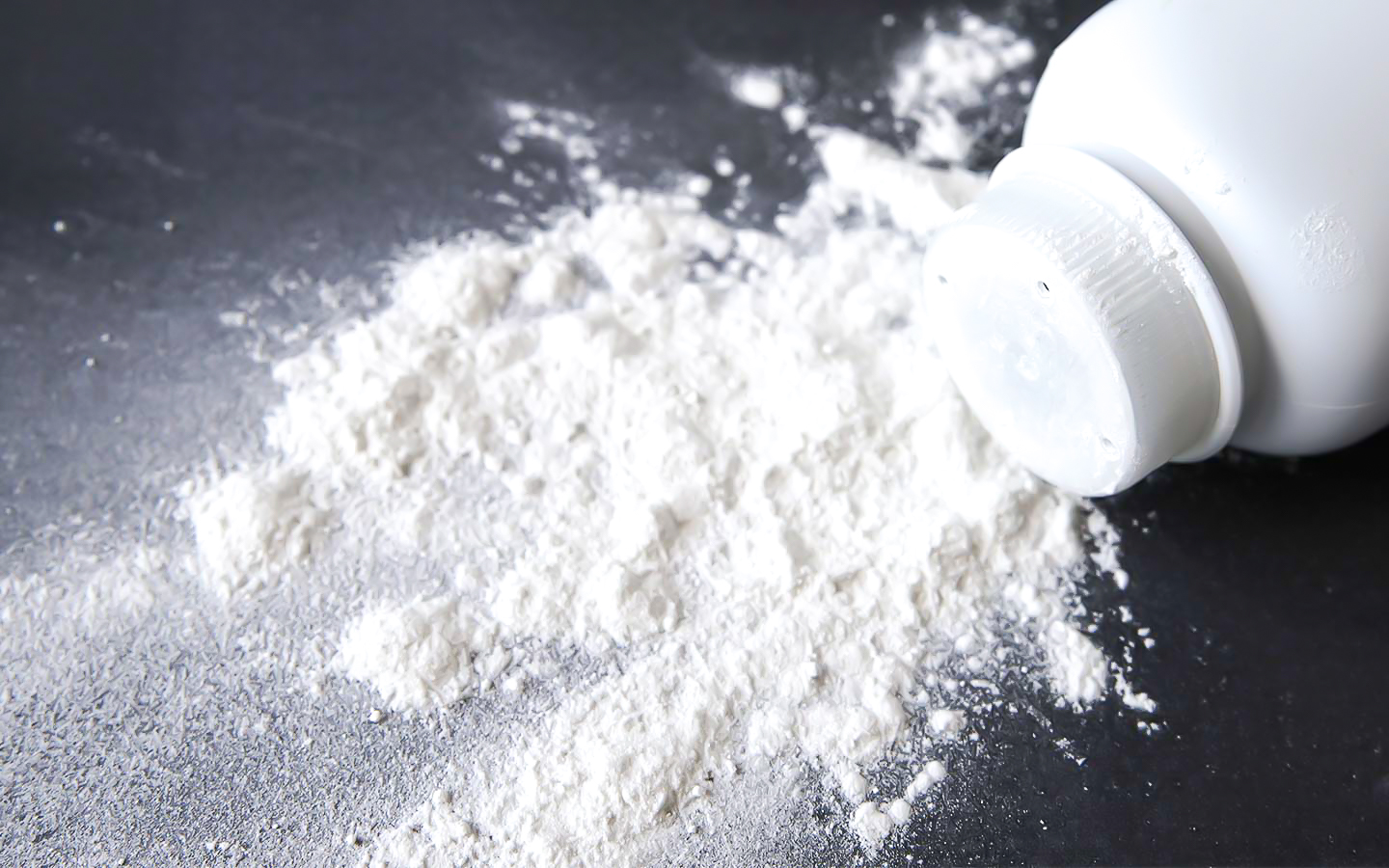

TALCUM-
What effect does the ingredient talcum have on the body?
Talc is a mineral that is used in many different ways in cosmetics. How talc works, which areas of application there are and how it is obtained, you can find out here.
Talc or talcum or also called magnesium silicate hydrate is a mineral that occurs naturally in different rock layers. It belongs to the rock-forming minerals in the epic zone of the crystalline schist series and is the main component of soapstone. Pure talc is a white, light, hydrophobic powder that is greasy to the touch. Talc is mined from the earth’s crust as stone underground. The crushed stones are thermally treated and then ground.
Talc can, by its property to absorb finely dispersed substances, protect the skin from external influences. It has an abrasive effect and thus ensures the smoothing of the skin by removing skin impurities through its abrasive and polishing effect. Due to its absorbent property, talc is able to keep the skin dry and thus prevent skin redness.
Talc is water-repellent or hygroscopic and is therefore often used in products to dry the skin and prevent skin redness, such as in baby body care or cosmetic powders. Due to its properties of absorbing finely dispersed substances and protecting the skin from external influences, it is also frequently used in care products for blemished skin. In the case of oily skin, talc, due to its absorbent property, can cause a short-term effect and make the skin look drier. With regular use of appropriate preparations for skin prone to impurities, however, a positive effect on the complexion can be achieved in the long term.
In addition to the use in powder form, talc is mainly used in various emulsion bases. There are very different areas of application such as: Deo creams, peelings or masks.
There are no restrictions on the use concentration for talc. The active ingredient can be used at 100% and sometimes is, as in various body powder products. There is no recommended daily dose or recommendation for use. Provided the product is used as intended, there are no further restrictions to be observed. However, powdered products of talc should be kept away from the nose and mouth of children under the age of three, as inhalation could lead to fine dust buildup, which in turn could cause pneumonia.
Talc is particularly suitable for oily or blemish-prone skin. The ingredient is also recommended for moist skin areas such as the diaper area of babies or sweaty feet of adults.